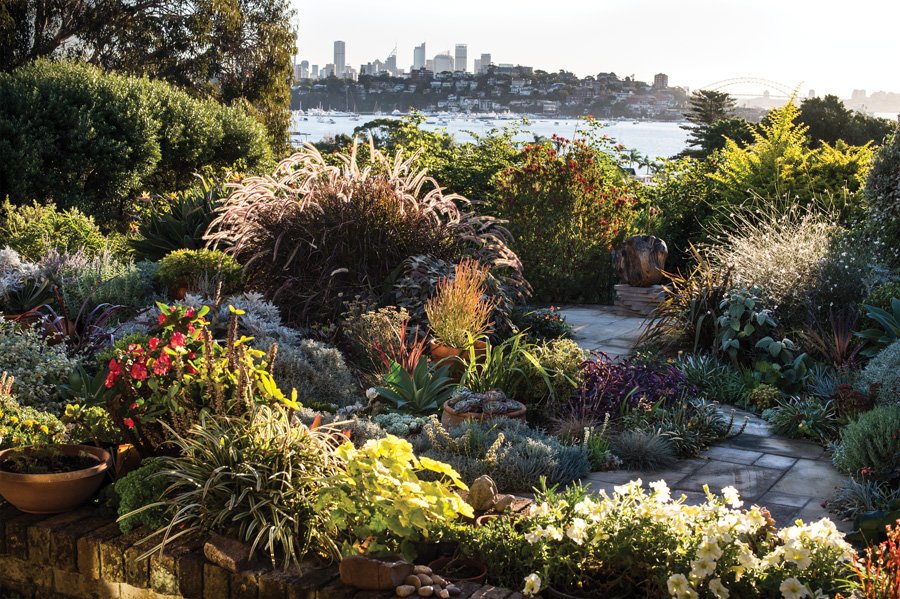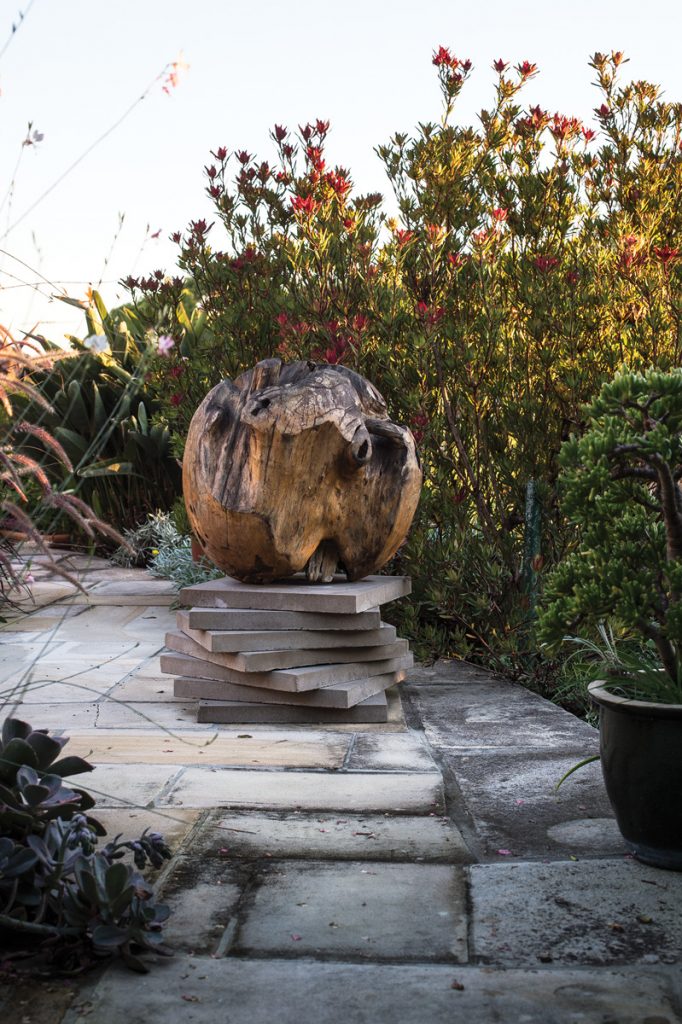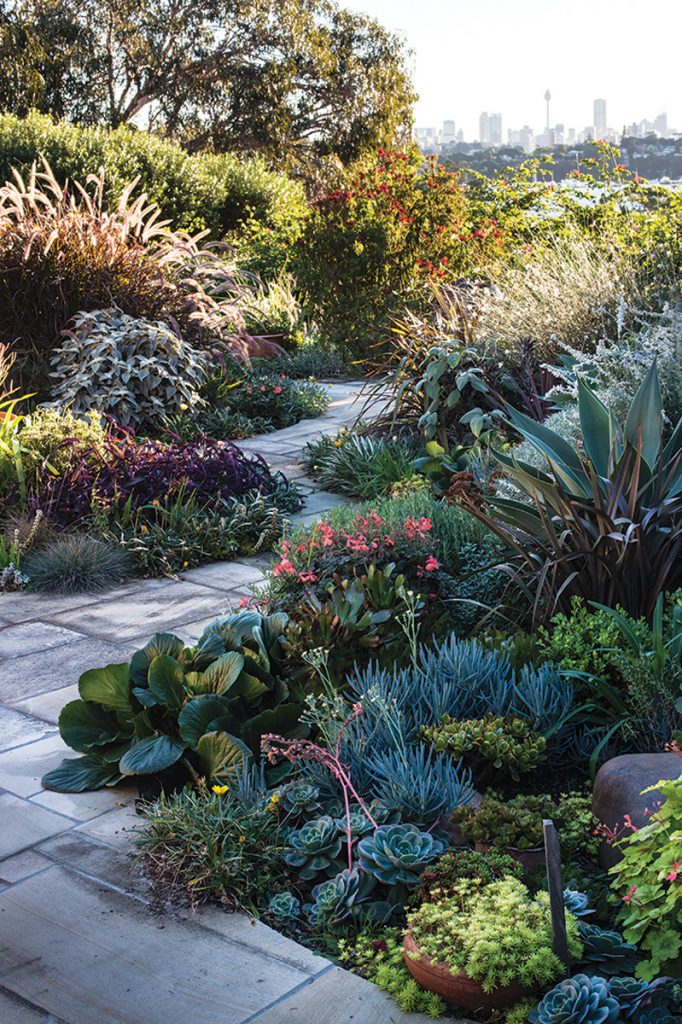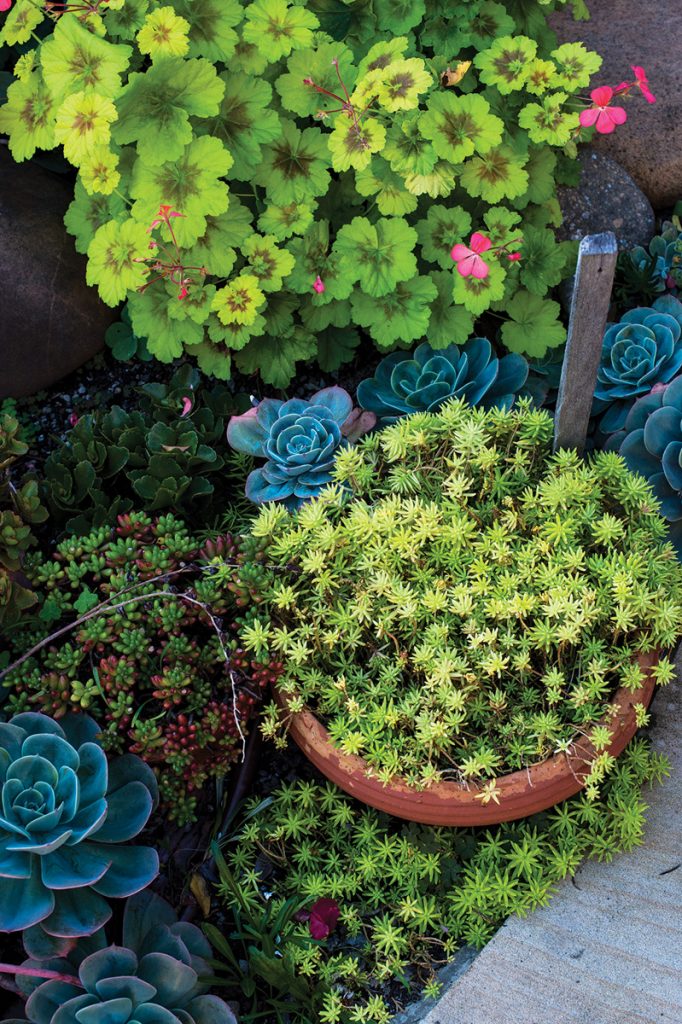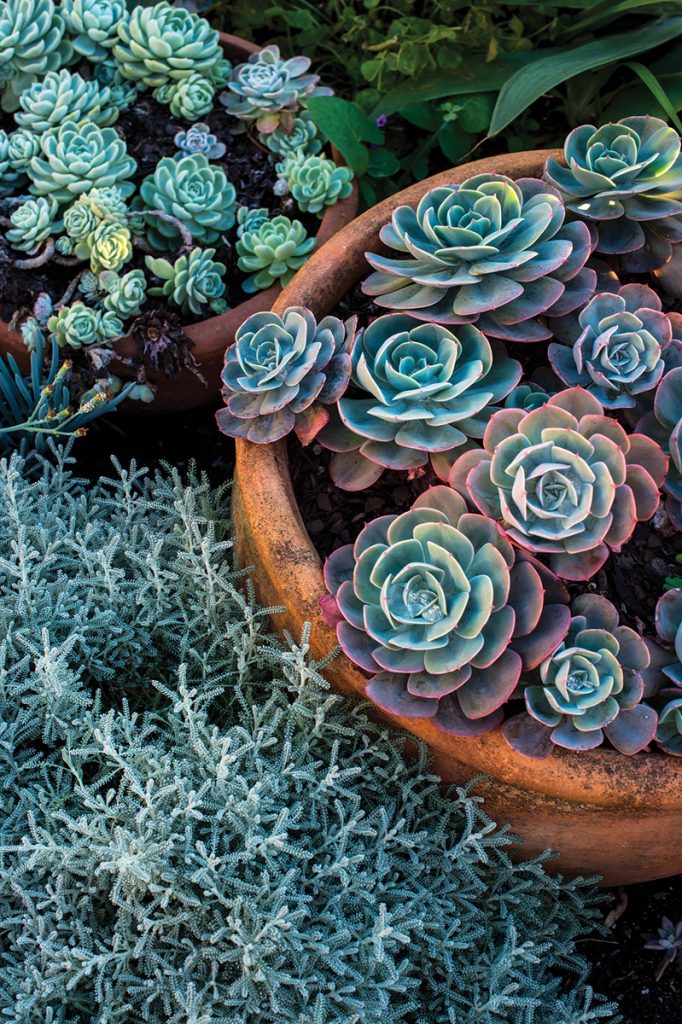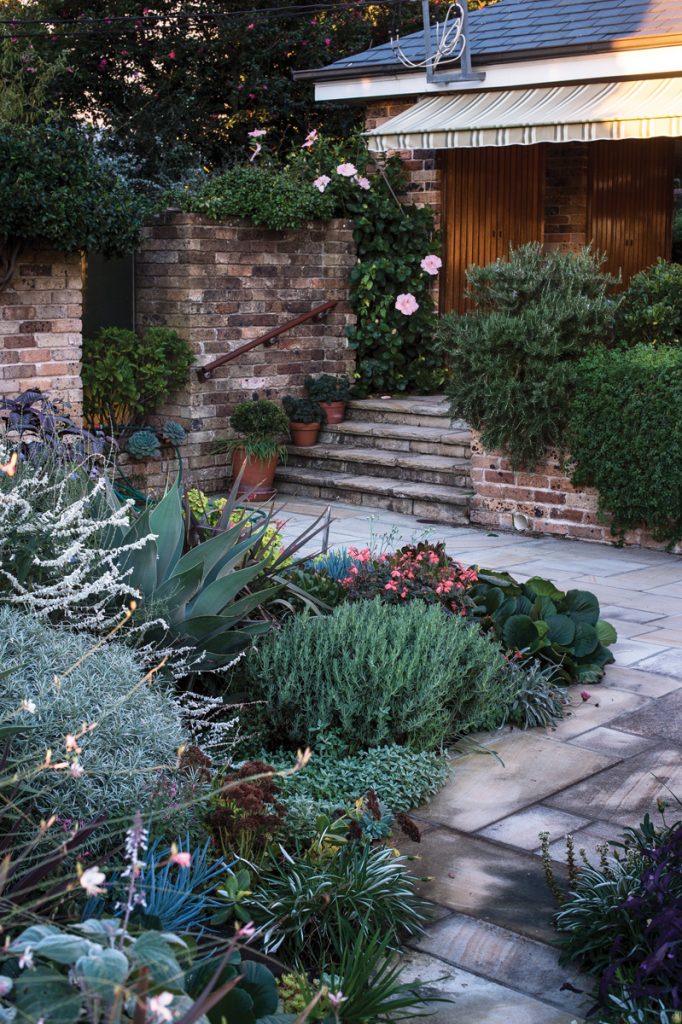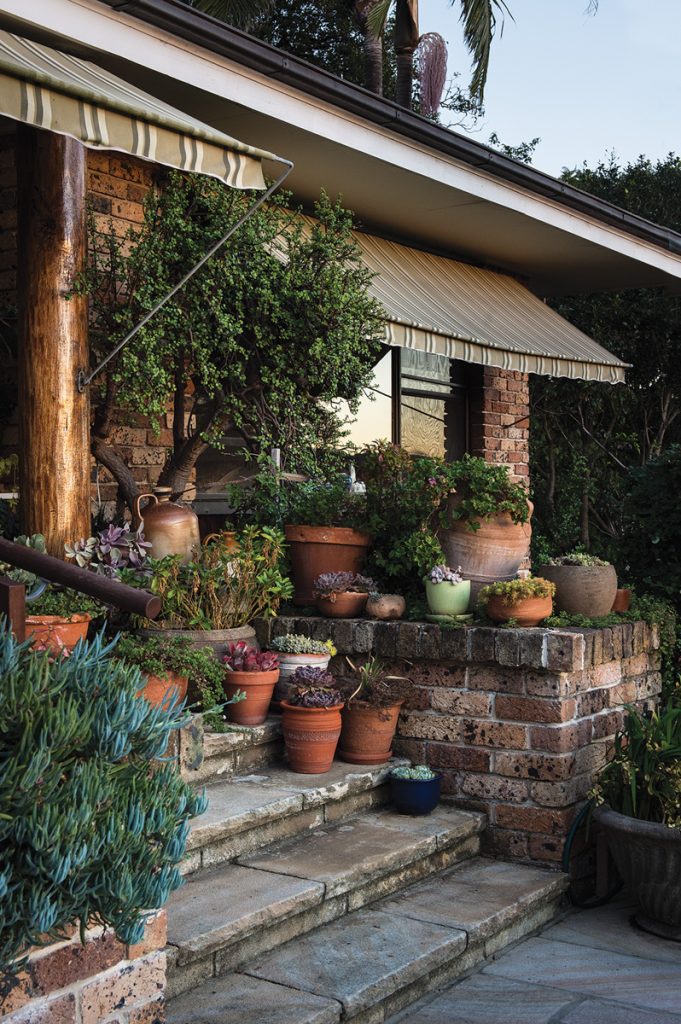Dry Land
An unused swimming pool becomes a constantly changing tapestry of colour, form and texture.
Once the kids have grown up and moved out, what can you do with an unwanted swimming pool that occupies a large chunk of the garden?
If the pool is on the edge of a cliff-top, as it was in this Sydney garden, removing it will be structurally difficult and expensive. You could leave the pool where it is, cover it over and turn it into an underground water tank. Or you could drain it, cover the drainage hole with a silt basket, partially fill the empty pool shell with tonnes of gravel and then top it off with a deep layer of good garden soil to turn it into a large, in-ground planter bed – which is exactly what this owner did.
The owner, now in her eighties, is an avid gardener. Living on her own, she no longer wanted the constant maintenance of a swimming pool and called landscape designer Barbara Landsberg to help solve her dilemma.
“Lenore loves her garden,” explains Barbara. “The swimming pool filled almost all of the main front terrace, which has views out across the harbour to the city. The idea was to fill it in and create three large, organically shaped garden beds with paths meandering between and around them, paved in the same sandstone that surrounded the old kidney-shaped pool.”
With only low shrubs and a couple of conifers around its three sides, the northwest-facing terrace basks in full sun for most of the day. The new plants therefore had to be hardy and sun-loving.
Barbara took her cues from the view, picking up the silvery tones of the harbour in much of the foliage. There are succulents, small shrubs and dainty perennials, tall clumps of billowy grasses and low creeping groundcovers. Dotted throughout the beds are more succulents in terracotta pots – the rusty colour of the clay picking up similar tones in plants with contrasting bronze-coloured leaves.
The walkways that wind through and around the beds invite wandering and allow for close inspection and garden tending, with many of the plants spilling out to soften the paths’ edges. Whenever the tiniest space in a garden bed presents itself, the owner quickly fills it with a new plant or a cutting. with an artist’s eye, putting together unusual plants and enjoying the juxtaposition of different colours, shapes and textures,” says Barbara.
To anyone surveying the garden it’s also obvious that the owner doesn’t have any biases – a true plantswoman, she loves all types of plants and delights in their individual features. Unexpected inclusions include variegated geraniums (Pelargonium ) with bright coral-coloured flowers, and some older, lesser-known varieties such as saxifragaceae (Bergenia ) and Persian shield (Strobilanthes ).
Visually the whole scheme is held together by clipped mounds of everlasting flowers (Helichrysum ) and cotton lavender (Santolina ) that act as repeated accents, as well as the pale sandstone-paved paths that weave around and contain the beds.
In the short time since it was completed the garden has flourished and already some over-exuberant species have had to be cut back hard or culled altogether, making room for new plants. It’s a work in progress, just as the owner likes it – a constantly changing tapestry, with colour, form and texture the main players.
A majestic silver-barked eucalypt growing in the front garden of a neighbouring property forms a magnificent backdrop to the new low garden in the foreground, with both framing the magical, everpresent view of the harbour in the distance.
